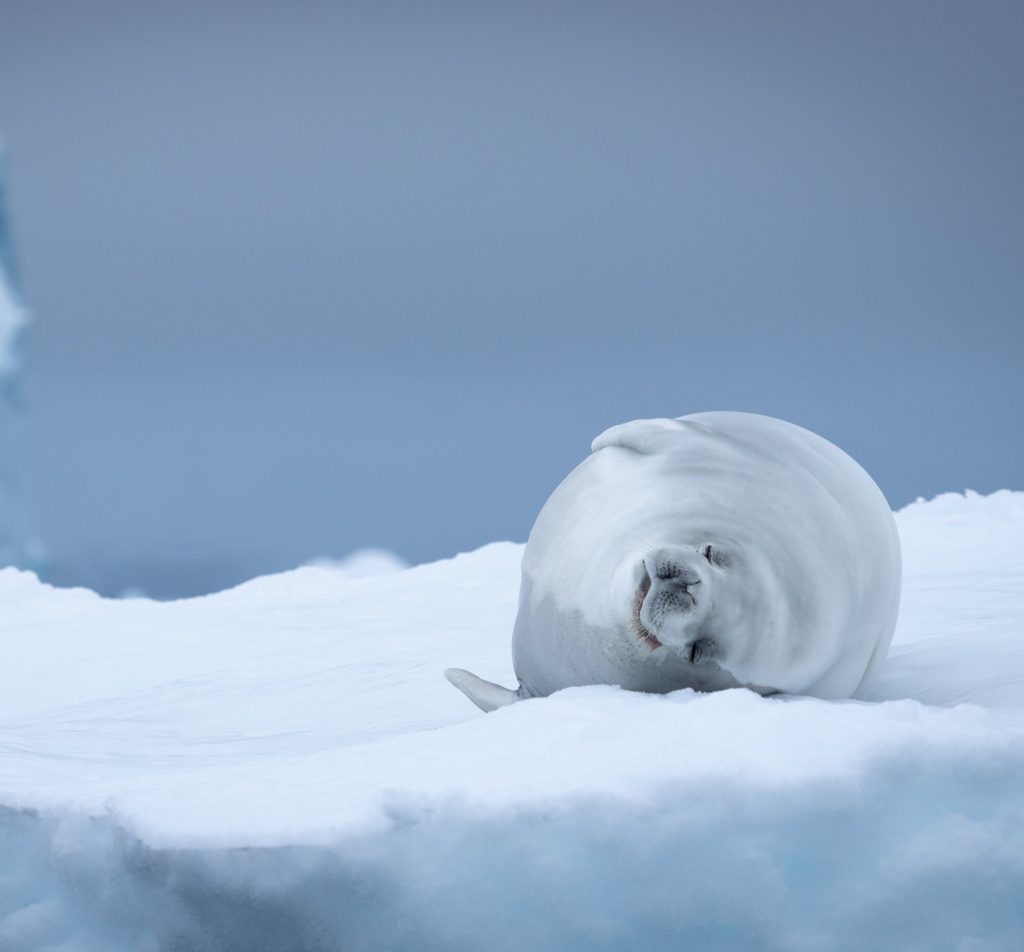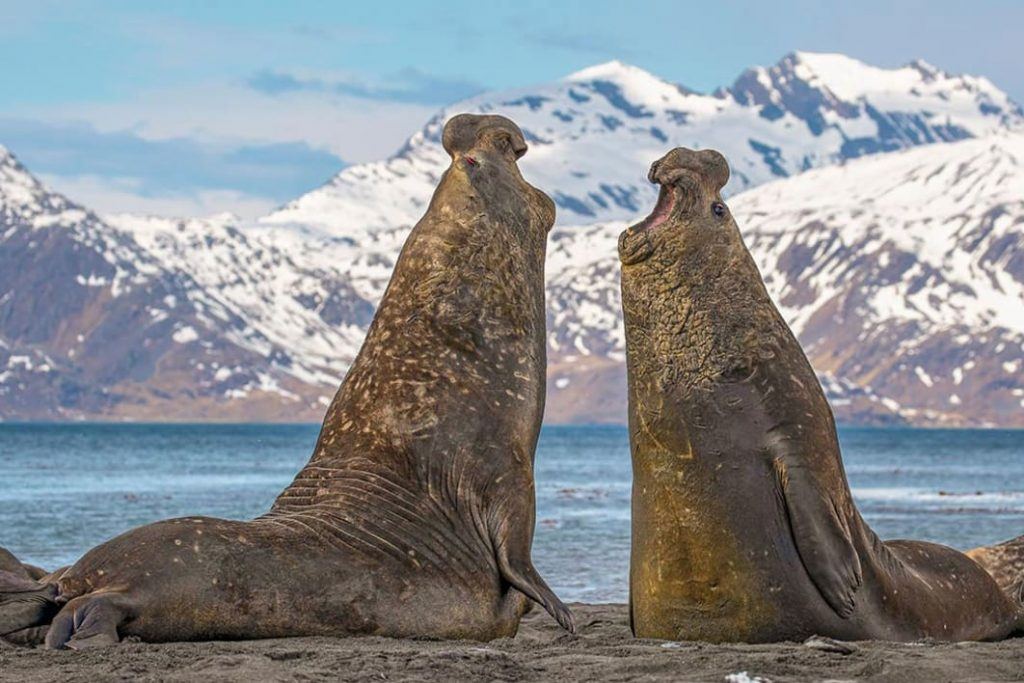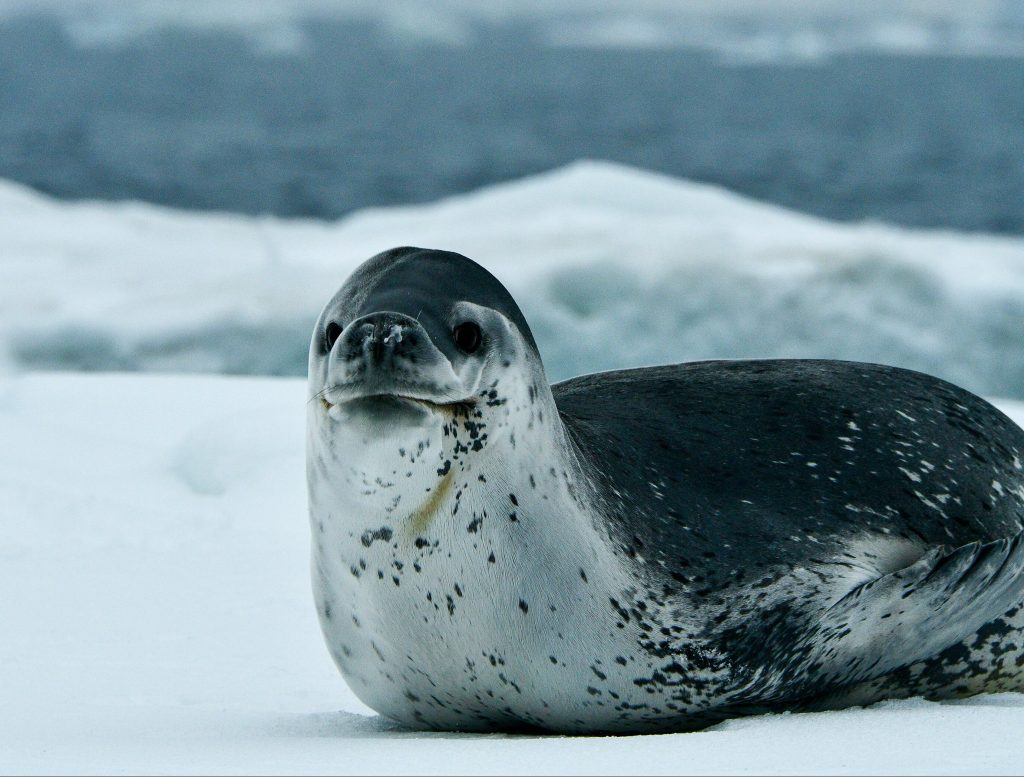5 Types of Seals You Can See in Antarctica
Spotting seals in their natural habitat is just one of the amazing wildlife highlights on our voyages to the Southern Hemisphere. Seals are members of a group of animals called pinnipeds, a collection that also includes walruses and sea lions (neither of which you will find in Antarctica).
The nutrient-rich waters of the Southern Ocean bring these expert divers and with few predators, they flourish. We often see many seals lounging around on sea ice or heaped up on the beaches of South Georgia and the Peninsula. Keep an eye on your belongings on shore, it’s not unusual for a curious seal to come to investigate a rogue backpack or camera.

Crabeater Seal
Its namesake is misleading, as Crabeater seals mainly eat krill, not crabs, as one might think. These doe-eyed animals often weigh up to 500 pounds and the females generally give birth to one pup per year. Crabeaters are pale in color, have a long body and snout, and can live up to 40 years. It’s thought that these animals may be the most abundant large animal, other than humans, in the world.

Southern Elephant Seal
Masters of the beach, the humungous elephant seal is known for putting on impressive mating rituals each spring and gathering in large groups, known as a ‘haulout’. Elephant seal pups, called weaners, enchant our guests with their big, wide eyes and sausage-like appearance. Earning their name from their huge size, the males develop a long trunk-like nose. While females remain slightly smaller, these animals are an impressive sight- males can measure over 20 feet long and up to 9,000 pounds! They are the largest pinniped in the world and, not surprisingly, a guest favorite.
Weddell Seal
These gentle giants spend most of their time underneath the Antarctic ice and can last underwater for over 45 minutes at a time. Weddell Seals can dive incredibly deep (up to around 600m) for food, which typically consists of krill, squid, and fish. Weddell Seals are named after British Captain James Weddell, and are recognized by their small heads and dark patterned backs with paler undersides. They are the southernmost breeding animal in the world.

Antarctic Fur Seal
One of the smallest of the Antarctic seals, Antarctic fur seals are the only member of the ‘eared seal’ family found in the Antarctic. In the 18th and 19th centuries, 95% of the world’s population of Antarctica Fur Seals were hunted- they were disastrously close to becoming extinct. Now a protected species, they are thriving. Adult males are quite large and are usually dark brown, while the females are smaller and paler in color. We have even spotted leucistic fur seals- ones missing the pigment in their fur- on our voyages. As many as 4 million seals congregate on South Georgia each year, offering an incredible spectacle to visitors of the island.
Leopard Seal
These predatory pinnipeds get their name from their spotted coat, though their name could also come from their incredible hunting ability that is ferocious in nature. Leopard Seals will hunt and eat fish, squid, krill, penguins, and even other seals. They are slender and powerful creatures, with long canine teeth for grabbing prey. Also known for their underwater singing ability, the males will sing for several hours a day. Leopard seals are found in the waters and pack ice throughout the Antarctic peninsula.
